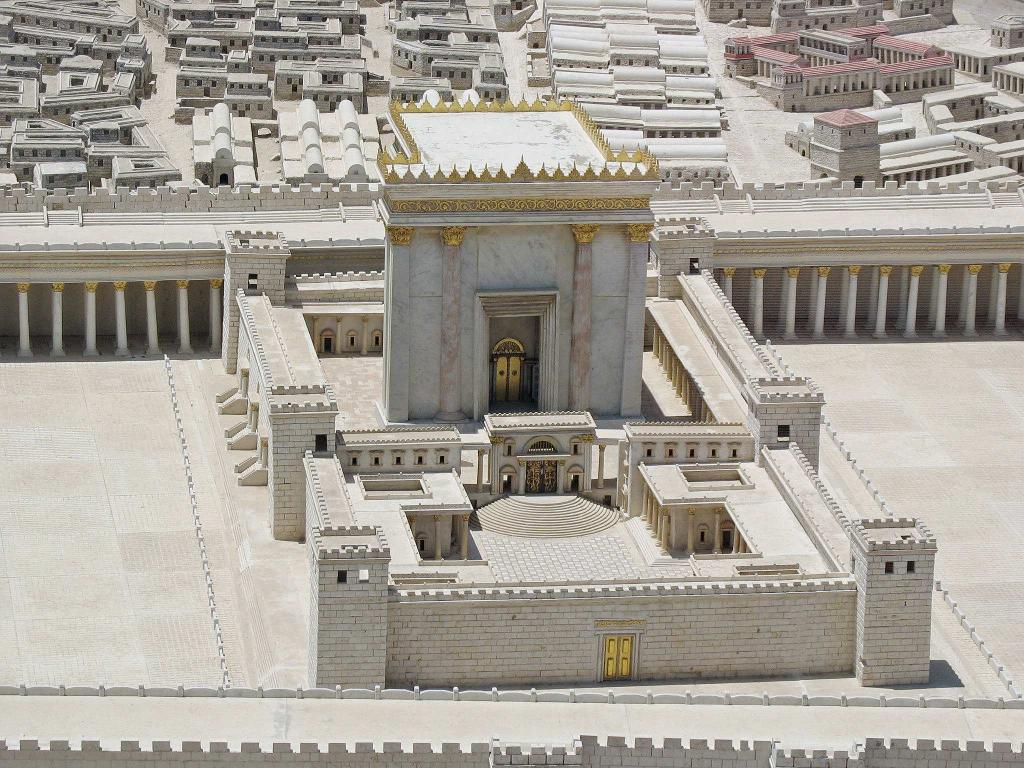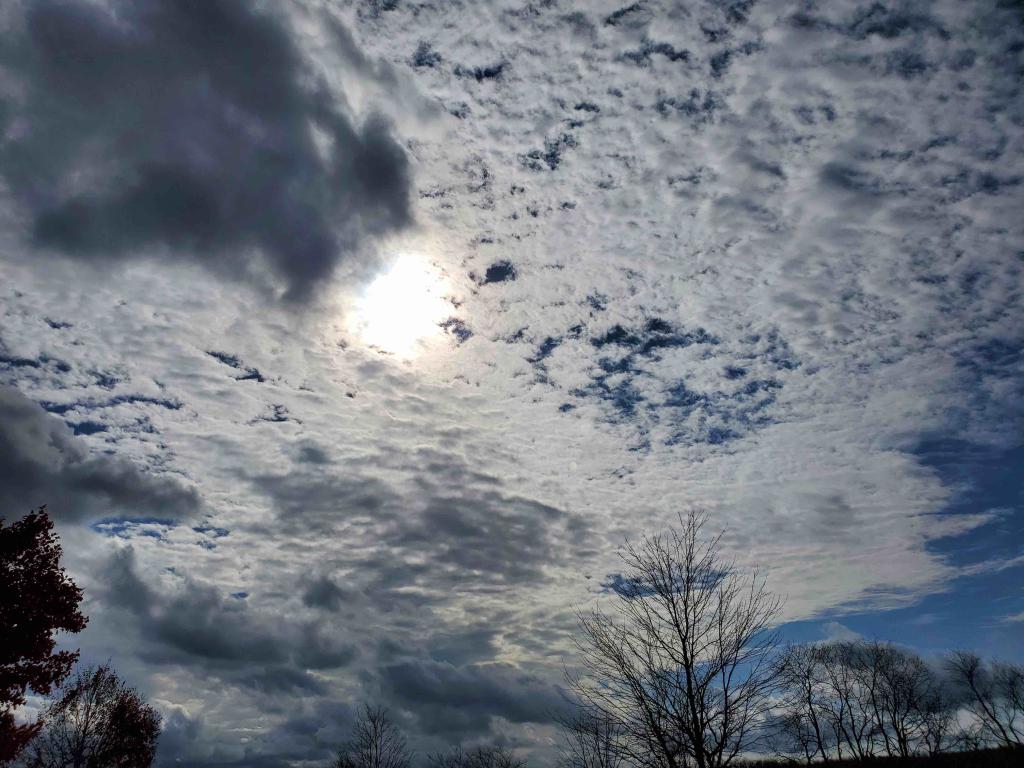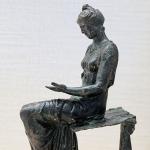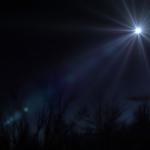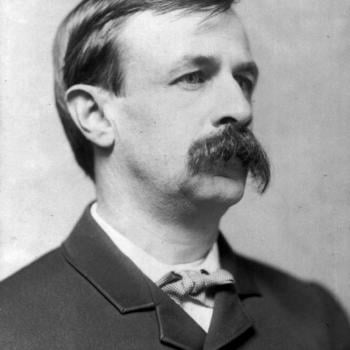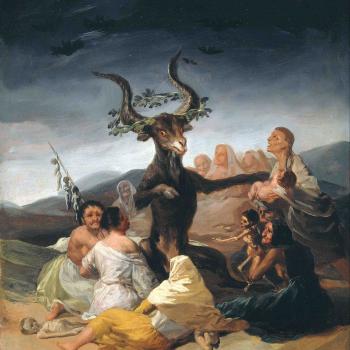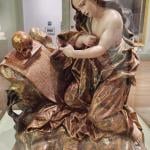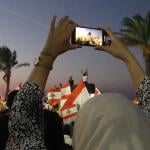The feast of Hanukkah begins this year on the evening of Sunday, December 18. Although Christians do not celebrate the feast, anyone with Jewish friends or neighbors will know it as a lovely event, with its lights burning through the Winter darkness, and its symbolism of liberation. But although it is not Christian, Hanukkah does feature in the New Testament, in an odd and suggestive way. Bear with me as I pursue a seasonal exploration here, and focus strongly on that word “Winter,” which in the New Testament setting is far more loaded, and more actively threatening, than we might at first think. This is not just a calendar reference. It raises the point of how any English translation can possibly render all the multifaceted meanings in the original text.
Finally, this all gets back to another theme that I touched on recently at this site, namely how this midwinter season of Christmas (and Hanukkah) is associated with apocalyptic and End Times thinking.
Jesus and the Dedication
John 10.22-23 says, “Then came the Festival of Dedication [egkainia] at Jerusalem. It was Winter [χειμών, cheimón], and Jesus was in the Temple courts walking in Solomon’s Colonnade.” This then leads into a controversy between Jesus and some Jewish opponents, who are appalled by what they see as his blasphemous claims. That egkainia is what we today call Hanukkah, or Dedication, the celebration of the liberation of the Temple during the Maccabees’ revolt against the Seleucid Greeks, in 164 BC.
That John passage demands some unpacking, and the closer we look at it, the odder it seems. It is a rare example of Jesus being recorded as celebrating a Jewish feast or holiday. Other than Passover, the other exception is Sukkot, or Tabernacles (skenopegia) in John 7.2 – and as I’ll explain, that is a crucial point. That Hanukkah is also the only event in Jesus’s life that is specifically dated to a named season of the year, namely Winter. We can make reasonable guesses about the timing of other events described in the gospels, and scholars have suggested how John in particular is alluding to the Jewish ritual calendar in organizing his work. But this particular line is specific. I have not calculated the date, but you could with reasonable probability pinpoint the actual week in 28 or 29 AD that is being referred to.
That Jesus would celebrate all Jewish feasts, including Hanukkah or Sukkot, is no surprise whatever, and as Craig Keener points out, any suggestion to the contrary wrongly diminishes and distorts his Jewishness. But the question does arise of, why mention Hanukkah? Judaism has many high and holy days, and Hanukkah was not a particularly important one. Only in modern times has it achieved its great visibility in Western countries, as a kind of counterpart to Christmas.
The timing issue is interesting in other ways. The gospels offer different messages about Jesus’s presence in Jerusalem. In the Synoptics, he is only specifically mentioned as visiting the city for his final confrontation, and death. In contrast, John suggests regular visits to Jerusalem, although partly that is because editors have sliced and diced earlier texts to rearrange materials for narrative or theological ends. For instance, Jesus’s cleansing of the Temple in John 2 must have happened at the end of his career, yet here it features near the beginning of the story. But John does have something of an advantage here: although the Synoptics don’t mention Jesus’s earlier Jerusalem visits, such must have occurred during the great pilgrim feasts.
But as I say, the Hanukkah reference stands out. Jesus is explicitly located in the city in the Winter, presumably in December, implying a visit that is clearly distinct from the Passover season visit in his last days. Also, Hanukkah was not a pilgrim feast.
Why tell us it is Winter anyway? John does not helpfully add that Tabernacles or Passover occur when they do, respectively in Fall or Spring. Nor do the evangelists ever casually throw in the kind of setting that we would expect from a modern biography, such as “Later that June, Jesus did X.” Need I add that no New Testament tradition associates Jesus’s birth with the bleak midwinter? If anything, the stories point to the Spring, when shepherds might plausibly have been found watching their flocks on Judean hills.
It is worth noting just how vanishingly rare that Winter language is in the Bible as a whole, and in the Jewish mind-set of the time. The word “winter” features rarely in the Old Testament, which is not surprising if we think of the regional climate. The Song of Solomon (2.11) has a passing reference to the time of winter [cheimón] rains having gone by, and Job (37.6) uses the same word for a stormy downpour. Otherwise, the main other Biblical references are just a standard combination of “summer and winter.” Even in the two Books of Maccabees, which record the original Dedication of the Temple, they just date the event and its commemoration to “the twenty-fifth day of the ninth month, which is the month of Chislev,” with no seasonal reference. Hence, that word cheimón barely appears in the Greek Septuagint translation. I will explain why it is such a loaded term.
Hanukkah and Tabernacles
What is happening with this Hanukkah/Winter story? I would suggest three things.
One is that, in its liturgy and symbolism, Hanukkah had a major overlap with Tabernacles, and so that discussion should be seen as part of the larger Tabernacles debate in John’s previous chapters. The eight days of Hanukkah echo and reproduce the eight days of Sukkot. Luc Devillers is a leading expert on this Tabernacles theme in John, and as he remarks (in a review), “the liturgy of the Dedication was duplicated in that of Tabernacles (see 2 Maccabees 10:6), so that the new feast was sometimes called “The feast of the Tabernacles of the month of Chislev” (2 Maccabees 1:9).” If you will pardon the phrase, it is Tabernacles Part Deux.
According to John, Jesus is in Jerusalem for Tabernacles in October (John 7) and again for Hanukkah in December (John 10), but those references are not given for biographical precision. What matters centrally for John’s argument is to fit Jesus into the Jewish liturgical year, and especially to those festivals pointing to the identity and renewal of the Jewish people. When John says that Jesus was in Jerusalem in feasts falling in October or December, he may or may not have been correct historically and biographically, but that is subordinate to his main purpose, and even irrelevant.
One other obvious point about the explosive political context. Hanukkah is about the destruction and rededication of the Temple after a period of pagan overlordship. Now there was a potentially very subversive subtext for Jesus’s time, an incendiary precedent for a time of Roman occupation. In various ways, all the evangelists were deeply interested in the Temple, and Jesus’s relationship to it. At his eventual trial, claims that he had spoken of destroying the Temple proved lethal. Eitan Bar also makes an excellent point about the Hanukkah passage in John. As he asks, if people at this particular Hanukkah season were necessarily thinking of the Maccabean insurrection, how did that condition their expectations about Jesus as a possible leader of political revolt? Might he himself be seen as a neo-Maccabee, so to speak?
Why Winter?
Also critical is the reference to Winter, cheimón, which has meanings quite apart from anything to do with feasts or holy days. That word signified the season that we know, but it also carried other implications, of tempest, storm, and general turbulence. In Matthew 16, Jesus says “When evening comes, you say, ‘It will be fair weather, for the sky is red,’ and in the morning, ‘Today it will be stormy, for the sky is red and overcast’.” That “stormy” phrase there is literally “there will be a storm [cheimón].” In Acts 27, the storm [cheimonós] continued raging.
By way of numbers, the word cheimón features six times in the New Testament, including the present Hanukkah one. Of the remainder, English versions normally render the word as “storm” twice (Matthew 16 and Acts 27). Two other references occur in parallel passages in Matthew and Mark, where Jesus prophesies the horrible times awaiting Jerusalem, and warns his followers that when they are forced to flee, they should pray that their flight does not take place in the Winter, cheimonós. That again points to the word’s threatening connotations. Otherwise, only the use in 2 Timothy 4.21 is purely seasonal.
Cheimón may mean Winter, but never in the pleasant sense of a Winter Wonderland. It’s not so much Jack Frost nipping at your nose, as the Angel of Death tapping on your shoulder.
So no, I don’t just think Winter is mentioned because it is when Hanukkah happens year by year. Rather, there are truly threatening implications here for the narrative as it develops. After the Hanukkah scene, we move into the raising of Lazarus, and the sequence of plots that culminate with Jesus’s death. It is almost as if John says “Jesus went to Jerusalem. The storm clouds were gathering.”
John 13 offers an analogy. At the Last Supper, “As soon as Judas had taken the bread, he went out. And it was night [en de nux, ἦν δὲ νύξ].” “Night” there is not just a chronological reference, it is an ominous symbol for a state of darkness and malevolence.
I also offer a couple of modern popular culture parallels. The 1984 film of The Terminator ends with Sarah Connor grimly agreeing to the warning that “They say there’s a storm coming,” which, as she alone knows, portends a killer robot apocalypse. Or to get the sense of what John implies by his use of cheimón, I’ll adapt another phrase that has been popular in recent years: Winter is coming.
There are a couple of fine personified Classical depictions of Cheimon, Winter, from mosaics here and here. I won’t reproduce them because I don’t know the copyright status, but you can link to them.
SOURCES
Eitan Bar, “Hanukkah,” in Craig A. Evans and David Mishkin eds., A Handbook on the Jewish Roots of the Christian Faith (Hendrickson, 2019), 92-95. This short piece is very good on applying the specific content of Hanukkah and its Maccabean origins to the dialogue between Jesus and the crowd.
Michael A. Daise, Feasts in John: Jewish Festivals and Jesus’s “Hour” in the Fourth Gospel (Mohr Siebeck, 2007)
Luc Devillers, La Fête de l’Envoyé (Paris: Gabalda, 2002)
Jamie Morton, The Role of the Physical Environment in Ancient Greek Seafaring (Brill 2001) and especially the chapter on “Sailing Seasons, Winter Sailing, And Night Sailing,” 255-265
Bruce G. Schuchard, “Temple, Festivals, and Scripture in the Gospel of John,” in Judith M. Lieu and Martinus C. de Boer, eds., The Oxford Handbook Of Johannine Studies (Oxford University Press, 2018), 381-395
Gerry Wheaton, The Role of Jewish Feasts in John’s Gospel (Cambridge University Press, 2015)
Elon Gilad did a nice history of the Hebrew background at “Word of the Day Stav: How the Ancient Word for Winter Turned Into Fall,” in Haaretz, November 7, 2013
I am expanding this column from one I did at this site some years back.


